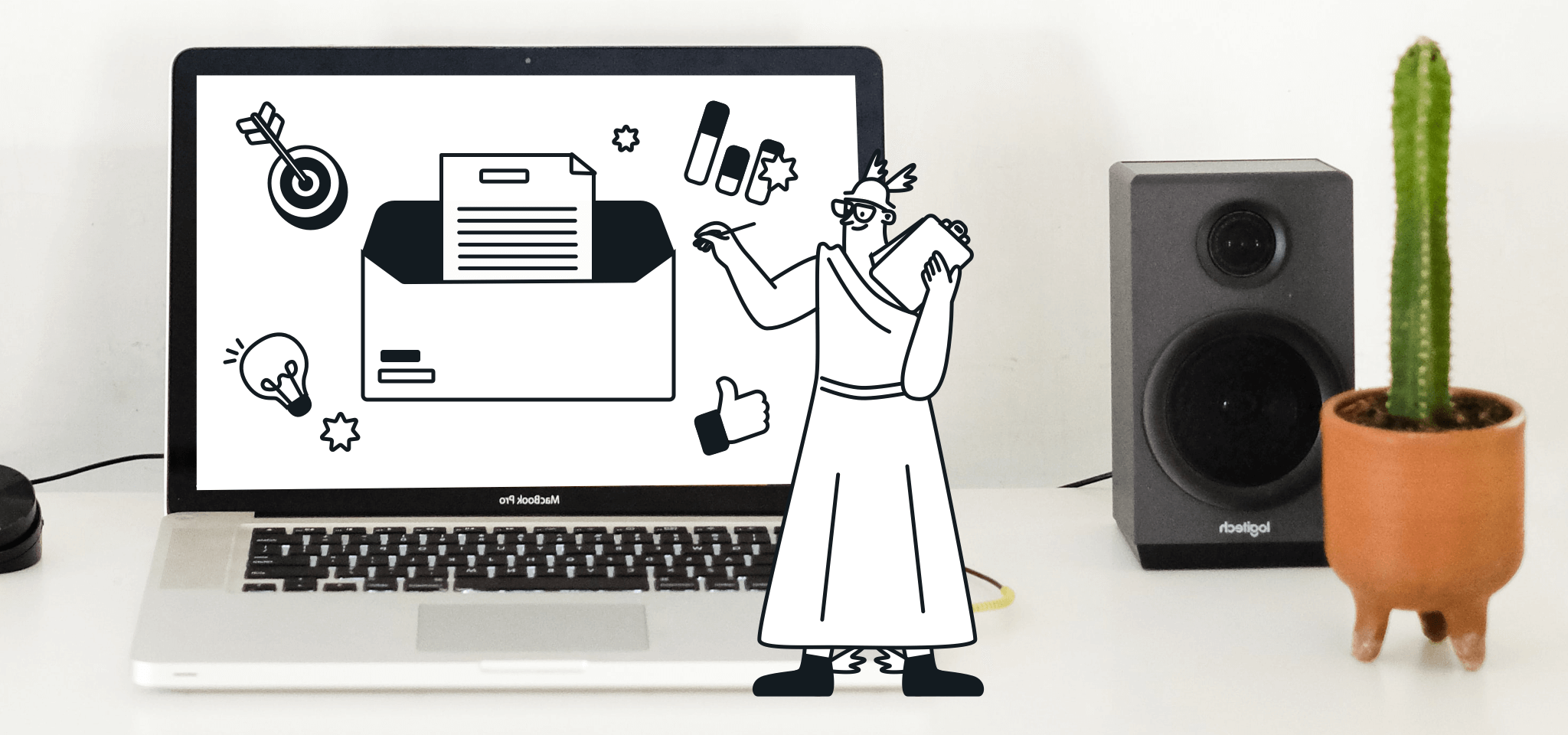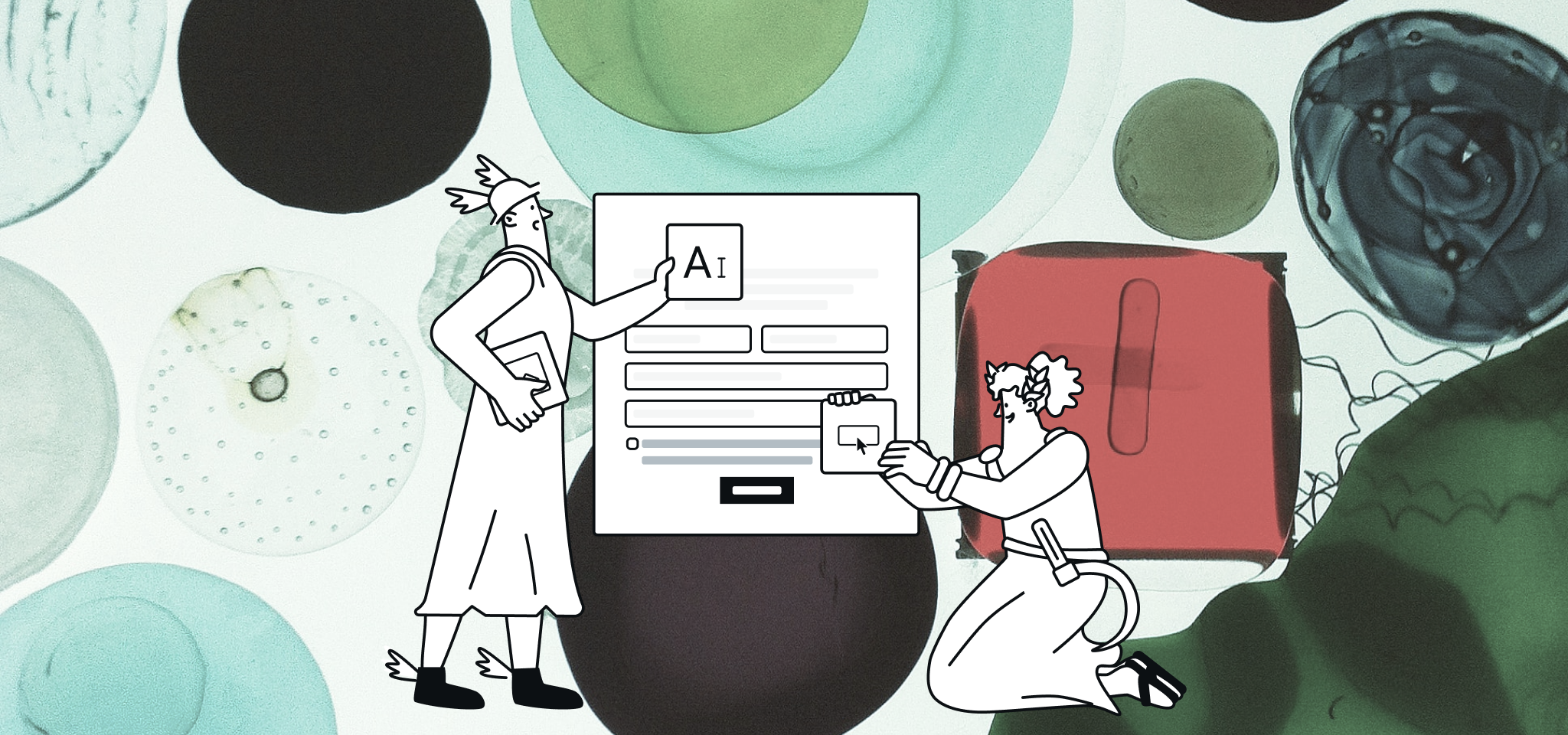Email Best Practices
7 strategies to improve your customer experience with email
How can you user your email to improve your customer experience? We give you 7 strategies to connect with them and create content that engages your clients.
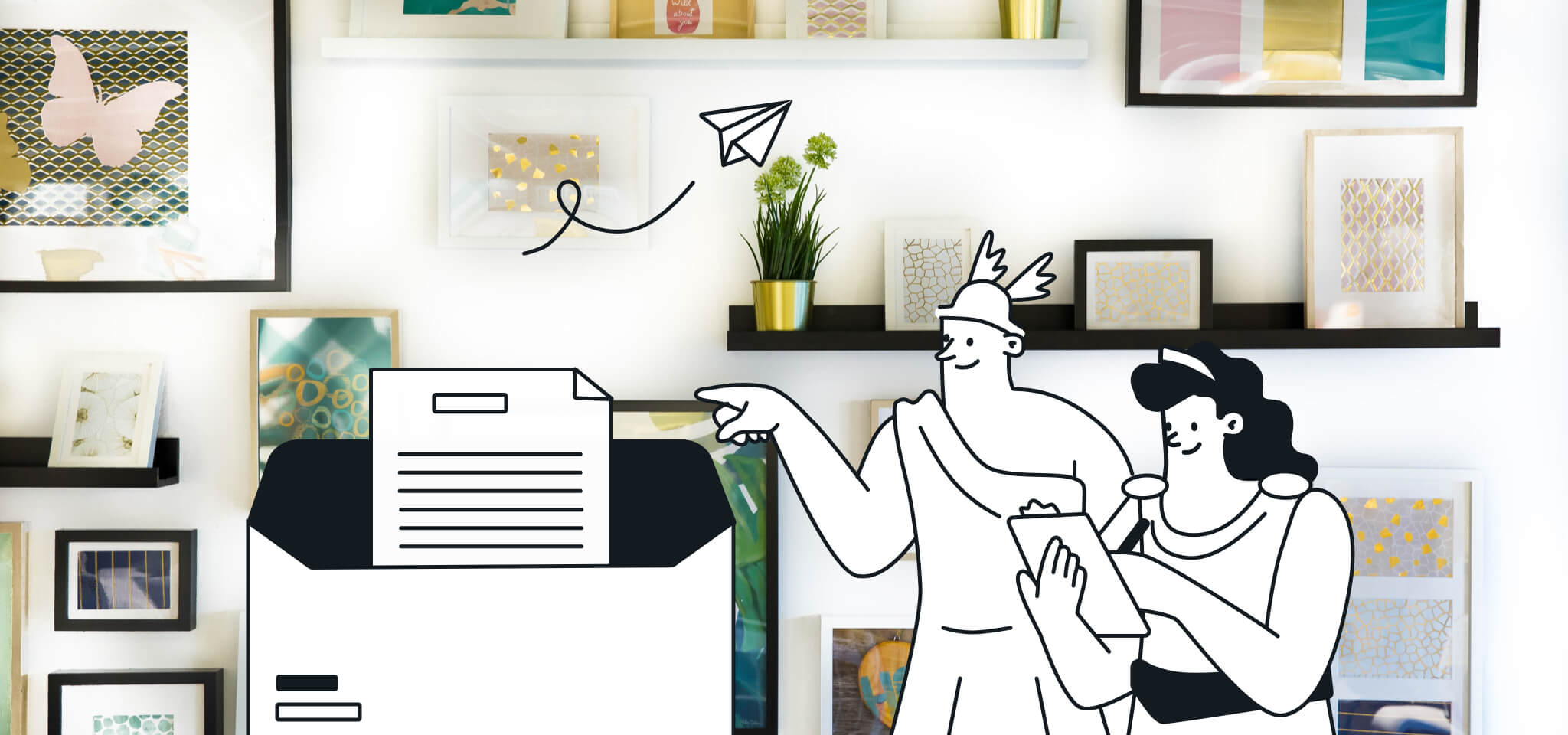
PUBLISHED ON
Sometimes email marketing can feel like an ocean of buzzwords from the movie Office Space. Synergy. Circling back. Improving customer experience. Okay, that one's actually important. But what if you’re working on other projects (like TPS reports) and struggling to brainstorm?
Have no fear. In this article, we will share some strategies that will help you improve your customer experience with email and strengthen their overall relationship with your business. Don't worry, there are no buzzwords required. So sit back, relax, and get ready for some knowledge.
Table of contents
Provide a great customer onboarding experience
Engage with your customers better with customer lifecycle emails
Offer a truly personalized email experience
Allow and encourage feedback from your customers
Create an emotional connection with your customer
Reward, reward, reward your customers
Use analytics to improve customer experience weak spots
What is customer experience?
Customer experience is the impression that consumers have of you and your brand. Obviously, you want them to think positively of you and to feel like they are receiving value from your products, services, and support. Creating a great customer experience is essential for any business, whether online or in-person.
What does this have to do with email? Well, some people may associate the term “customer experience” with in-person services and support but, if your business is online, you need to have a communications and support strategy that can help all of your customers, regardless of location. Email is a fantastic—and fun—way to do this.
Using email to improve your customer experience
First things first: why is email such a great tool for improving your customers’ experience with your brand?
Simply put, email is a quick, easily customizable way to reach your clients and let them know that you genuinely care about their questions and concerns. No matter what message you’re trying to convey, email allows you to use both text and other design elements to craft a fast, personalized communication. You can personalize each message so that your clients know you truly understand their needs, and that you care about fulfilling them.
Email is a great way to target your audience more effectively. Tools like segmentation, personalization or email automation help you create a truly customized email experience for each of your subscribers. Sending the right message at the right time and to the right contact is easy with email, but it’s also incredibly effective. Who doesn’t like a timely birthday email with a personalized promotion, offering your favorite doughnut for free at your local coffee shop?
Strategies to improve your customer experience
In order to use your email program to its fullest potential, you need to be able to differentiate your emails and use specific strategies for certain audiences and occasions. Check out the strategies below to see how you can do this quickly and easily.
Provide a great customer onboarding experience
So you’ve earned a new client—now what? Well, you have to hit the ground running and provide your customer with a great introduction to your service. Do this by implementing a smooth, intuitive email onboarding experience for every client. When your emails are easily readable and usable from the start, clients will know that you are committed to taking care of their needs from the start.
Use these onboarding emails to educate your clients in the use of your tool or product, so they can make the most of it. Sequentialize them to follow your clients’ learning journey and give them valuable information about how to access their account, how to use your service, and more. In this way, you can reduce future support requests and complaints and foster a positive relationship with clients by giving simple instructions and recommendations from the very first day.
A good example is Amazon's onboarding email series for the Amazon Echo, which periodically educates customers on some of the cool things your device can do. The example below includes several “starting out” phrases that new customers can use to get started. Alexa, can you define “great customer service”?
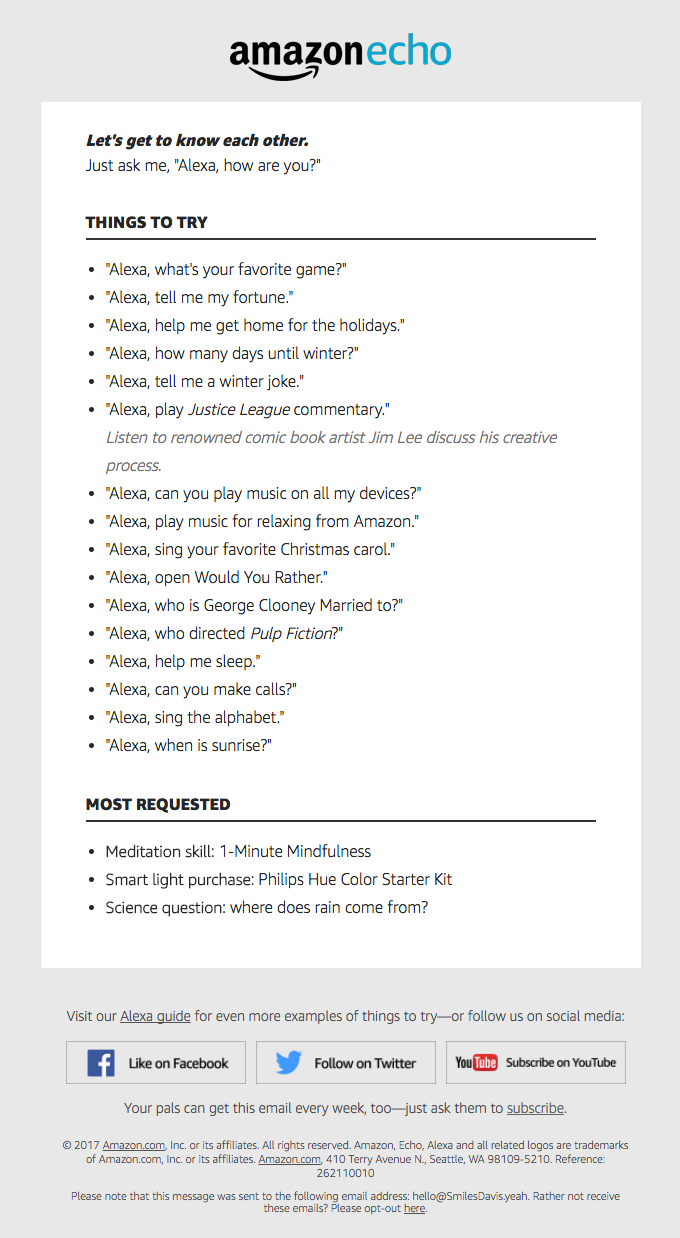
Engage with your customers better with customer lifecycle emails
There are multiple touchpoints a company can have with its customers throughout the customer lifecycle. A newsletter registration, a first purchase, a special anniversary... Planning an email strategy for the customer lifecycle will allow you to stay in touch throughout the duration of your relationship and improve the overall customer experience, anticipating needs and highlighting how valuable they are.
Some examples of customer lifecycle messages include:
Welcome and onboarding emails. These emails introduce you to new customers and give them important information about your brand, and how you can serve them.
Notification emails. Do you have a new product, service, or feature that can help a portion (or all) of your audience? Notify them of it. Also, notify them of events, webpages, and other resources that can improve their experience.
Milestone emails. We talk more about these emails below, but milestone emails (for anniversaries, birthdays, etc.) help you to create a genuine relationship with each customer and make them feel valued. Both notification and milestone emails can help you with customer retention—your audience will like the fact that you’re paying attention to their needs and offering both solutions and rewards.
Below is a great example of a welcome email from Affinity, a creative software company. Not only does Affinity address the user by their name, it also links to their account and tells them exactly what they can do through the link.
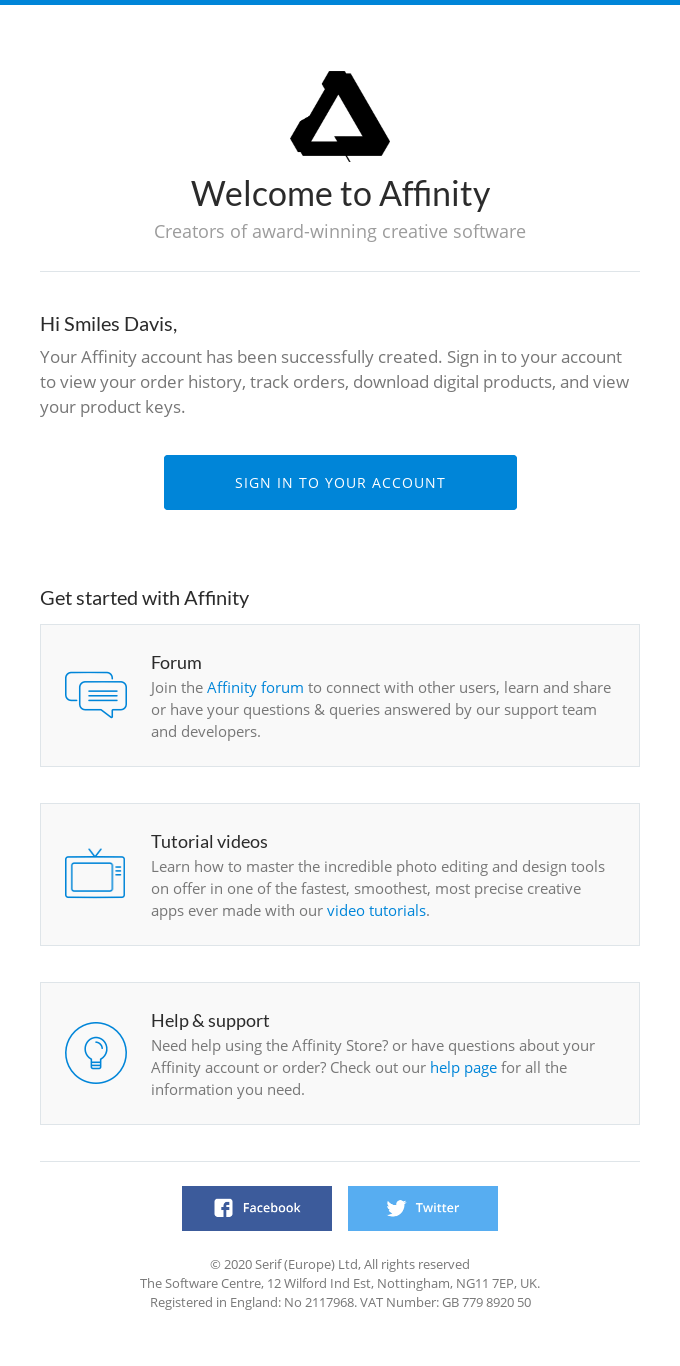
Additionally, the email provides some helpful links to places where many users would want to go. With a simple click, the user can join the Affinity forum, watch tutorial videos, and contact support. Everything a new user would need is all in one place. Affinity is taking the time to ensure that this customer has a great experience with them.
Offer a truly personalized email experience
Make sure that you're sending truly personalized emails to your audience. We spoke a little bit about this in our previous sections, but personalization goes beyond adding a name or a link. You can use segmentation to sort your audience into groups and target them based on demographics and interest, which helps customers get what they truly need.
For an even better personalization, Mailjet’s dynamic content blocks and templating language can make your emails feel truly customized. You can vary your templates from audience to audience and add images, links, and other content that will shape your readers’ reactions… and future actions. Because of the power of personalization, your audience members may rarely receive the same email, and can say goodbye to bland form messages. Pretty cool, right?
A good example of this is Netflix's recommendations emails, as shown below. This email provides recommendations to a user who has watched Stranger Things and just returned from the Upside-Down.

Of course, all of Netflix's subscribers watch different content and have different tastes, so Netflix measures each audience member's taste and recommends movies and TV shows to them based on what they've already seen. It's a great way to both market their product and endear themselves to their audience by promoting a fun new experience.
Allow and encourage feedback from your customers
This one's pretty simple. Make sure that you are reaching out to your subscribers and asking for suggestions and commentary on what you're doing well or could improve on. Customers like to know that they have some measure of say in what they're using (and especially what they’re paying for), and allowing them to have input into their products and services will vastly improve their experience… and make you stronger.
There are many strategies you can use for feedback, which include:
Reply-to addresses. Make it simple for your customers to provide direct feedback by giving them a reply-to address that they can send emails to. You may not want replies going to the email address or addresses you sent from, so using a unique reply-to address allows you to receive feedback without clogging up your sender inbox.
Contact calls-to-action. Sometimes, people just need reminders. Include bright graphics, attention-getting copy, and (if applicable) direct contact links for your customers. If you don’t have links, include your best contact information. Tell customers you want to hear from them and improve their experience. That provides an incentive for contact and communication.
Surveys. Send your customers surveys. What do they think you can do better? What are you doing well? Make sure your survey is simple, cleanly designed, and allows for detailed responses. To incentivize customers, you can highlight that their feedback will make you serve them better, or tease the fact that you’ll provide a reward for fast completion or pick a respondent at random. Make it fun for your customers.
A good example of a survey notification comes from Food52, a food and cultural website. The email is clean and easy to read, and it promises a short survey that will help provide a better customer experience. The email reader knows that they will be able to make a difference and improve their experience with Food52 as a result. And who doesn't want that? Especially when it involves food…

Create an emotional connection with your customer
Seems pretty obvious, right? Everybody likes to be noticed. Make sure that you truly notice your customers, and let them know you’ve noticed. Tell their stories, share content that you’ve created for them, and let them know that they are not just a number, but a real relationship. Opening up an email just for them—that might even have them in it—is a personal and exciting moment.
On your side, highlight your team members, your values, and your brand personality. Don't be afraid to have fun with it. Tell your stories and create truly engaging content. Everyone likes to know that there is a real person on the other side of their email. And, by making the effort, you strengthen your genuine bond with each customer.
A great example of an individualized email is the below email from Hubba, a food delivery and pick-up company. This email is specifically targeted to highlight achievements and recommendations for one of its workplace customers. It’s not a sales pitch—instead, the email offers statistics and trending restaurants that are unique to the organization, and it takes time to spotlight an “office hero.” This creates a sense of bonding and recognition for the customer, as they know they are receiving curated content that’s fit for them.

Reward, reward, reward your customers
Hey, there’s a reason why we all love birthdays, contests, and personal or professional incentives. Everyone loves getting a prize, reward, or just a surprise gift. Don't reach out to your subscribers only when you have something to sell. A one-way, hard-sell relationship is not going to last very long, and your customers will not appreciate the experience.
So, to continue the theme of these strategies, treat them well. You can use some of the following reward options to build better relationships.
Incentives
Use emails to offer well-received incentives like loyalty programs, discounts, and first looks at new products. People love knowing that their loyalty is rewarded with exclusives like discounts and first looks. Throw in a freebie every now and then, too. Offer a free service or product for said loyalty programs, with a certain amount of points, or just for fun.
These options are great for retention and provide an incentive for your customers to open and read your emails—after all, who knows what may be inside?
Milestones
Celebrate milestones—birthdays, membership anniversaries, and more. Send those celebratory and milestone emails (and, hey, you can conveniently send those milestone emails with Mailjet’s anniversary tool), and watch the positive feedback and extended customer relationship life cycles roll in. As with the above incentives, milestone celebrations provide incentives for interaction and, additionally, strengthen your customers’ bond with you. Showing that you know a birthday or anniversary provides a personal touch.
Check out the below birthday freebie message from Pizza Hut. It’s fun, colorful, and it offers a free product exclusively for the reader. What subscriber wouldn’t love it? Also, we hope those cinnamon sticks come with extra icing…

Contests
Throw contests to get your customers involved. Need a new tagline, product name, or other new idea? Encourage your customers to get involved and submit their suggestions. Offer prizes to those who come up with the winners.
Not only does this give your customers a personal investment in you via their own contributions, but it’s a fun way to promote yourself and offer them new information without sounding like a sales pitch.
Use analytics to improve customer experience weak spots
Ah, numbers, the letters of math. When it comes to customer email strategies, you may expect that, once you send an email, its usefulness is limited. However, using analytics for sent emails can give you a big boost when it comes to refining your overall email strategy. You can use analytics tools to track your email open and click-through rates, subscription numbers, and more.
These numbers say a lot about your customers’ satisfaction with you. Are your onboarding emails clear enough? Do your users appreciate the content of your loyalty program emails? Use analytics to see how your emails have performed, and where you can improve your customer relationships via email (hint: you could use one of the six previous strategies to help you out).
When these numbers begin to grow, you’ll know what your customers are responding to… and how you can give them more of what they want most.
Improving your customer experience with Mailjet
So, hopefully, our journey through customer email strategies hasn’t been as bad as spending your Saturday in the office. Used wisely, all of the above tips can help you make more genuine connections with your customers and extend your relationship life cycles.
If you want an easy, all-in-one platform to help you grow your email strategy quickly, remember that Mailjet has everything you need—including email-building capabilities with segmentation, personalization, dynamic content, milestone and anniversary email automated workflows, advanced email analytics, and more.
Now, you’ll have to excuse us. We have to go finish some TPS reports…




